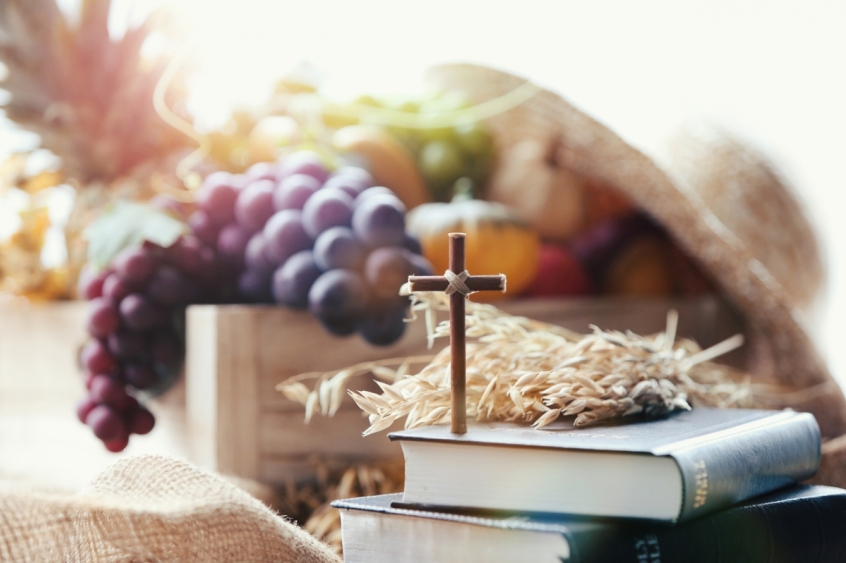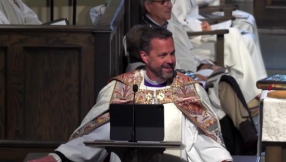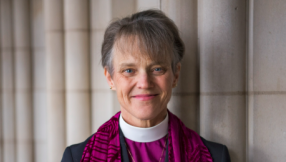
Through September and October, British churches of most denominations have a Harvest Festival, but the modern Harvest Festival is mainly a Victorian development based on biblical themes.
Harvests Festivals in the Bible
Feasts connected to harvest are mentioned in the Bible. The Feast of Weeks (Shavout) marked the start of harvest when the first-fruits were gathered in, and the Feast of Ingathering (Sukkot) marked when all was gathered in at the end of harvest. In the Hebrew calendar, the Feast of Ingathering finished on the 21st day of the seventh month called Tishrei, which falls between late September and late October.
Exodus 23:16 says "You shall keep the feast of ingathering at the end of the year, when you gather in from the field the fruit of your labour" (NIV). It is described in Exodus 34:22, where it is called the "Festival of Ingathering at the year's end" in the traditional King James Version or the "Festival of the Final Harvest" by the New Living Translation. It marked the end of the harvest and thus the end of the agricultural year.
Thanksgiving Days
The Book of Common Prayer, used by the Church of England, provides for special Thanksgiving prayers for specific occasions such as thanksgiving at times of rain after drought, times of peace, deliverance from plague, and for thanksgiving for plenty.
Thanksgiving Days were called nationally in England by the Privy Council and the Church of England, which set a special national Thanksgiving Day for England and Wales, and separate ones were also called in Scotland.
A national Thanksgiving Day was like a public holiday, except in addition there was a special church service when a liturgical prayer of thanksgiving was read out. Sometimes it was the set prayer from the Book of Common Prayer, and sometimes it was one specially written for that year.
North American Thanksgivings
English colonists in North America continued the tradition and held Thanksgivings for harvest and safe passage. In 1578, Martin Frobisher held a Thanksgiving for a safe passage to Newfoundland. This is the origin of the Canadian Thanksgiving tradition, now held each second Monday of October. In 1621, the Pilgrim Fathers held a Harvest Thanksgiving at Plymouth, Massachusetts. This is the origin of the American Thanksgiving, held since 1941 on the fourth Thursday in November.
National Thanksgiving Days
Thanksgiving Days were called for peace in 1588 after the defeat of the Spanish Armada, in 1805 after the Battle of Trafalgar, in 1815 after the Battle of Waterloo, and on April 14, 1833 to mark the end of a cholera epidemic. In years when there was an abundant harvest nationally, there would be a nationally set Thanksgiving Day. In England general bumper harvests were marked by national Harvest Thanksgiving Days. These were officially called in 1796, 1801, 1810, 1813, 1832 and 1842.
West Country
Sometimes special thanksgivings were called in a particular parish or area by a minister or bishop. These were more common in the West Country of England, especially in Devon and Cornwall, where the climate is generally milder than other parts of England, and harvest is usually earlier and sometimes greater. Good harvests in Devon in the 1830s were marked by many Harvest Thanksgivings.
First Annual Harvest Festival
The first church to make the Harvest Thanksgiving an annual service is believed to be the church of St Mary and St Giles at Buckerell, near Honiton in Devon. Rev Edwin Coleridge, held a Harvest Thanksgiving at Buckerell on Friday, 14 October 1840, and then held one every year when the parish church was decorated with fruits of the harvest.
Harvest Loaf
In 1843, a great harvest in Cornwall led to local Harvest Thanksgivings. Rev J Ellis of St Minver held a Harvest Thanksgiving on Thursday 21 September 1843. Meanwhile Rev Robert Hawker (1803–1875) of Morwenstow invited all his parishioners to a special service on Sunday 1 October 1843, to share communion with bread made from the newly harvested corn. This was reported in newspapers and caught on, and today many churches have a freshly made harvest loaf on their communion table at harvest time, often crafted into the shape of a wheatsheaf. Sometimes Rev Robert Hawker is credited with inventing the modern Harvest Festival, but that is not really true.
Hungry Forties
After 1843, the mid-1840s were generally years of poor harvests known as the Hungry Forties. Potato blight affected crops from 1845, resulting in the Irish Potato Famine. When there was a great harvest in England again in 1847, a national Harvest Thanksgiving Day was set for Sunday 17 October 1847 when churches made collections for poor relief in Ireland. Poor harvests again followed, but in 1854 there was another great harvest.
Bumper Harvests
A national Harvest Thanksgiving Day was set for Sunday 1 October 1854. Abundant harvests followed in successive years from 1855 to 1859. Although there was a bad harvest in 1860, by then the idea of an annual Harvest Thanksgiving service had set in as a popular event in the church calendar. Annual Harvest Thanksgiving services became common across Anglican churches in the 1860s, and started to be common in non-conformist churches in the 1870s. St Paul's Cathedral in London first held one in 1874.
The tradition was to bring in the last sheaf of corn from the harvest. Over time the decorations became more elaborate with people bringing in vegetables, fruit and flowers. This draws reference to Deuteronomy 16:10 which says "celebrate the Harvest Festival, to honour the LORD your God, by bringing him a freewill offering in proportion to the blessing he has given you" (GNB).
Harvest Suppers
In times before mechanisation, agriculture employed much of the local community in rural areas. At harvest the whole community, including children, were needed to help right up until the end. Schools broke up in August to allow teachers and children to assist with the harvest, which is the origin of the long school summer holidays.
In Britain, after the end of the harvest, it was traditional that farmers gave a feast called a Harvest Supper for their workers and their families. In Victorian times it was usually in a barn, and traditionally consisted of roast beef and boiled vegetables followed by plum pudding.
At these occasions, farmers and labourers sat together as equals. The men were given plenty of beer, or cider, to drink. Afterwards, the women and children went home, and the men might stay and give toasts, and often had singing and entertainment into the late hours. This was also called a Harvest Home because it happened after the final cartload was taken home to the farm.
From the 1840s, some villages combined the Harvest Supper and the Harvest Thanksgiving into a general parochial Harvest Festival. Instead of each farmer providing supper for his own workers, all the farmers waited until they had finished harvesting, and then made a parishwide Harvest Festival.
These Harvest Suppers were typically held in a large marquee, or in the schoolroom, with a service in the local parish church. In some places, this might be a morning service followed by a lunch, or an afternoon tea followed by an evening service, or a later church service followed by a dinner. Some churches still hold a Harvest Supper today.
The vicar was often invited to say a prayer before the meal. One such vicar, Rev Henry Alford (1810-1871), wrote a hymn based on biblical themes of harvest called "Come, ye thankful people, come, Raise the song of harvest home!" This was published in Hymns and Psalms in 1844 and from then on, was often sung at these occasions. It has been a popular harvest hymn ever since.
Harvest Hymns
As Harvest Festivals became more popular, more hymns were written for such occasions, drawing references from the Bible. Many of the ones still sung today date from the Victorian era. "All things bright and beautiful", based on Psalm 104:24-25, was published in 1848. "We plough the fields and scatter", where the chorus is based on James 1:17, was translated into English from German in 1861.
"Bringing in the Sheaves", based on Psalm 126:5-6, was written in 1874. Another hymn called "Hear us, O Lord '' or the Manx Fishermen's Hymn published in 1896, references the "silver harvest of the sea".
British Harvest Festivals
In rural areas the Harvest Festival is one of those occasions, along with Christmas and Easter, when people who do not normally attend church might come along. In rural areas, where one vicar might have more than one parish church to look after, they will normally ensure that each of the Harvest Festivals is on a different Sunday.
In villages where there might be more than one church of different denominations, it was common to deliberately hold their Harvest Festivals on different Sundays, so that people could choose which one to attend. Often the food on display was given to a local hospital, children's home, or auctioned for charity. These days it might be given to a local food bank.
Harvest Festivals were also adopted elsewhere. Schools, clubs and some pubs would also organise them, and invite the local minister to come along to conduct the service. Although not so common in pubs now, they are still held in some primary schools in Britain, and are held in most churches.
The Harvest Festival is a custom which is held across the denominations in similar ways. Unlike in North America, in Britain there is no set date for a Harvest Thanksgiving, but it is usually on a Sunday and typically in September or October.
Neil Rees is a publishing consultant, historian, freelance writer and speaker. He is also involved in youth work at his local village church, and guest preaching in churches of different denominations.













